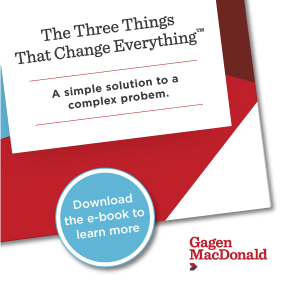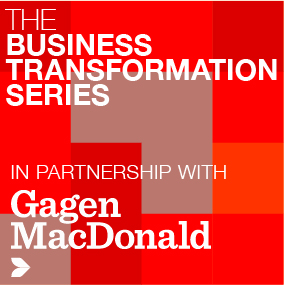Gagen MacDonald 20 Feb 2019 // 8:13PM GMT

By Maril MacDonald
Many of us began our careers during a time when executives viewed corporate communication’s responsibility as “controlling the message”: writing memos, drafting press releases and presentations, pitching and responding to journalists, and planning events. These activities were all necessary and important, and while we knew we were providing value beyond these deliverables, our ability to do them quickly, and at a high level of quality, made us valuable. This value gave us power.
But power is changing.
Several years ago, Jeremy Heimans, a social business leader and political activist, and Henry Timms, the executive director of the 92nd Street Y in New York City, wrote an article for the Harvard Business Review entitled “Understanding New Power.” In it, they paint a picture of the shifting nature of power—from “old power” to “new power”—that will underlie the success (or failure) of large organizations in the decades to come.
As Heimans and Timms describe it, “Old power works like a currency. It is held by few. Once gained, it is jealously guarded, and the powerful have a substantial store of it to spend. It is closed, inaccessible and leader-driven….New power operates differently, like a current. It is made by many. It is open, participatory and peer-driven. It uploads, and it distributes. Like water or electricity, it’s most forceful when it surges. The goal with new power is not to hoard it, but to channel it.”
The old view of “controlling the message” not only works against the tides of modern technology and media, but it enables “old power” in our companies, and fails to grasp the true value we can—and must—bring to our organizations today. As communicators, we are connectors. Going forward, with our businesses undergoing significant—and seemingly unending—transformations, connectors will be more valuable than ever before.
A decade from now, few industries will be untouched by disruption and few large companies will strongly resemble their present state. The companies who are thriving then will owe their success to their ability to rapidly innovate, shapeshift and evolve. If we want to have a hand in driving transformation, as communicators, we need to dive in.
At its core, communication is about relationships. We need to let go of our “old power” (“controlling the message”) and harness our “new power” (the ability to bring people together). We can’t just check the box that we shared information: We need to do the hard work of forming lasting and reciprocal bonds.
So, how do we exercise our new power?
First, we capture the imagination. As communicators, we possess more than just key messages and a schedule for when, where and how those messages need to be shared. We also possess great creativity and emotional intelligence. Bringing people from many walks of life together requires a common aspiration. As employees and consumers, we are all hungry to feel as though we are a part of something bigger than ourselves. Whether you make heart valves or widgets, every company on the planet has the ability to impact the world in some significant way. We need to be deeply attuned to the unique and authentic way our companies each—to quote Steve Jobs—“make a dent in the universe,” and be relentless about telling that compelling story.
Second, we get leaders on board. Leaders—from the CEO to frontline managers—are essential in driving business transformation. They set direction, determine rewards and career advancement, and generally model key behaviors. It doesn’t matter what we read on our company intranet or hear in a town hall meeting if our boss contradicts that message when we return to our desks. This is why it’s critical that we focus our communications efforts on building and strengthening the relationship between leaders and the company’s strategy and vision. When leaders are committed to a common direction, thousands of people operate in harmony. However, when leaders are misaligned or disengaged, the ripple effect is tremendous. Teams operate in isolation and their efforts frequently cancel each other out.
Finally, we create space for our employees to delve into our transformations. In an “old power” environment, we might write a presentation to convey our business priorities and strategic plan; in a “new power” environment, we need more than their understanding—we need their participation. We need to work with executives across our enterprises to create companies with high curbs and wide boulevards, where our employees can convene, experiment and innovate in a safe, protected and healthy manner. As connectors, we are well-suited to bring these types of plans to bear, and to help guide the design of companies that are fit for the future.
Learn more about how you can help drive your company’s business transformation in Gagen MacDonald’s The Three Things that Change Everything™ eBook.
Maril MacDonald is the CEO and founder of Gagen MacDonald, a leading strategy execution firm. She is a nationally recognized leader in communication, strategy execution and business transformation. Maril has pioneered a discipline that collaborates with corporate leaders to energize and mobilize their workforce behind a company’s strategic goals, culture and brand to optimize business performance.



































.jpg)














